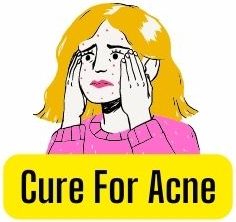
Before you start using a self-tanner, make sure that you dry your skin well and exfoliate it thoroughly. Apply a moisturizer after you apply the self-tanner to protect it. This way, your skin will be protected while still looking healthy. If you do have a self-tanner on top of a moisturizer, use a different product for that part of your body.
Exfoliating before applying a self-tanner
To get the best self-tan, you need to prepare your skin properly before applying a self-tanner. Exfoliation helps your self-tanner absorb pigment more efficiently. If your skin is dry, you can also apply a moisturizer to those areas twenty minutes before you plan to apply your self-tanner. Exfoliating also helps you apply your self-tanner evenly and create a natural-looking tan.
Exfoliating is essential to get a bronze, even tan. Using a shaver or an exfoliating glove is an effective way to prep your skin for self-tanning. Shaving immediately after you apply a self-tanner will also remove the prickly hair that might interfere with the application process. You don’t want to risk removing your self-tanner only to find out it didn’t work!
Before you apply a self-tanner, you should exfoliate your body thoroughly. This step will prevent streaks and uneven tans. Choose oil-free exfoliators. Oil-based scrubs can block the self-tanner from reaching your skin, causing a streaky finish. To make things easier for yourself, always apply a self-tanner with a light color first, and slowly increase the colour. The light self-tanner will also make mistakes easier to correct.
Another important step before applying a self-tanner is exfoliating your hands. After applying a self-tanner, you should use makeup wipes to wipe off the exfoliator. After you’ve applied a self-tanner, you should apply a facial toner with alcohol. This will help remove any self-tanner that you might have used previously.
Drying the skin before applying a self-tanner
Before you begin tanning, you need to know what kind of skin you have. If you have dry skin, you should avoid exfoliation. If you have chapped or cracked skin, you should wait a day or two before applying a self-tanner. You should also avoid shaving right before you apply your self-tanner. You can shave your face, but if you do it immediately after tanning, it will remove the tan you just applied.
If you want to avoid the dreaded “dirty knee look,” dry your skin. Then, apply a moisturizing lotion to your entire body, including your elbows and knees. Once your hands are moisturized, dry them thoroughly before applying a self-tanner. Then, wait fifteen minutes before you wear your new tan. Wear loose-fitting clothes, but avoid tight shoes and clothing while tanning.
To prevent the self-tanner from rubbing into your skin, apply a face powder to the affected areas. Those areas are usually dry. While excessive application won’t turn you orange, it will leave you with a streaky tan. Make sure to coat your skin evenly with self-tanner without rubbing. You can then towel off excess product to prevent any unevenness.
The best way to combat dry skin before applying a self-tan is to apply a moisturising cream. Applying a moisturising cream before applying a self-tanner will help your self-tan stay longer. If you don’t, you can always apply a moisturising cream or lotion afterwards. However, this isn’t always practical.
Adding a self-tanner to a moisturizer
Applying self-tanner with hands is a common mistake, but it can actually be helpful. You can use a makeup sponge or plastic bag to apply the product. You may also use a hot roller to close your pores. To prevent your face from becoming greasy, you should always thoroughly dry it before applying any tanning product. It is also helpful to wear gloves to protect your hands.
Adding a self-tanner into your moisturizer can prevent your skin from becoming too dry. When you apply it directly to your skin, you risk streaking or transferring the color to your clothes. Instead, dilute the self-tanner with a moisturizer first. After a few hours, you will see a gradual and natural-looking color. To achieve a natural-looking color, apply two or three drops in summer and four or five drops during winter.
The next step in applying a self-tanner to your skin is to use a moisturizer that is designed for tanned skin. A moisturizer will keep your skin healthy and moisturized, and it will last longer. Self-tanning is more difficult to achieve than ever with dry skin, so it’s important to use a moisturizer designed for the purpose.
If you’d prefer to use a lotion, add some self-tanner to it. This way, you won’t have to worry about tan lines and blemishes after your self-tan is applied. The lotion will also give your self-tanner a fluid texture and a natural glow. If you want to get a bronzed glow in a hurry, you can use a moisturizer that contains both.
Formaldehyde content of self-tanners
While you may not have heard of formaldehyde, it is an ingredient that is still commonly found in many sunless tanners and hair straightening products. While this chemical is used for many reasons, including its antimicrobial properties, formaldehyde can be harmful to your health if exposed to your skin for long periods of time. In addition to causing allergic reactions, formaldehyde is also known to cause respiratory problems, headaches, and nausea. If you want to get a natural tan, avoid any product that contains Formalin.
Although self-tanning products can produce a deep brown tan in a matter of minutes, they are not healthy. They can cause skin cancer if they are not used properly and stored for too long. For this reason, the Barmer health insurance company has issued a warning against these products. While the law only applies to products that contain formaldehyde directly, self-tanning products may contain it after manufacturing.
In addition to DHA, natural self-tanners should also be avoided. DHA is a chemical naturally found in meat. However, it can gasify into formaldehyde if exposed to high amounts. Self-tanning products made of natural derivate DHA (DHA from soy and sugar) do not contain formaldehyde. These self-tanning products may be safe, but some of the conventional brands can contain harmful chemicals. The Oko test for cosmetics products conducted in 2016 found that many conventional brands of self-tanners contained high levels of formaldehyde.
Self-tanners also contain dyes. DHA is a sugar molecule that triggers a reaction in the epidermis, or top layer of skin. This reaction produces a tan that appears after a few hours. Fortunately, most natural self-tanners contain safe DHA from natural sources. If you’re still skeptical about the ingredients of self-tanners, take a deep look at their chemical processes.
Choosing a non-comedogenic self-tanner
When shopping for self-tanner, you need to choose one that is safe for acne-prone skin. Choose one with fewer oils and that does not lock your pores. Look for a product that has relaxing or refreshing properties and doesn’t have an overwhelming scent. Look for products that have been tested and approved by dermatologists for acne-prone skin. Self-tanners are often available in several forms, including lotions, mousses, wipes, and sticks. Lotions take longer to dry than other products and tend to be more moisturizing. If you have dry skin, a lotion is a good option.
The best non-comedogenic self-tanning creams don’t contain oils or alcohol. They also don’t contain hyaluronic acid, which can clog pores. Non-comedogenic self-tanners also contain ingredients that are soothing to sensitive skin. A few good products are Tanceuticals Facial Self-Tanner, Beauty by Earth Self-Tanner, and Sorbet.





